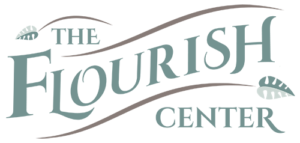
by Jen Owen, N.P. | Apr 16, 2025 | Mind-Body Medicine, Uncategorized
Written by our Licensed Professional Counselor, Jody Cecil
If you’re new to the process of counseling, you might imagine it looking something like this: the client does most of the talking while the therapist listens. During the session, the therapist might provide insights into your experiences, share advice on how to navigate issues and help you feel and express emotion. Even as you read this, you might recall a scene from a movie or book you’ve recently read.
Counseling or psychotherapy does involve our thoughts, beliefs, behaviors and emotions. But what about the body?
Will you join me in a little experiment? For just a moment, pause. Put everything down and turn your attention to your body. Slow down and notice your breath. Follow it as you breathe in and out. You don’t have to change it or fix it. Simply be curious, much like watching the flow of a river or clouds in the sky. What did you notice? Perhaps you’ve found yourself caught in thoughts, unable to follow your breath. Maybe your chest tightened, and your breathing became more shallow. Perhaps, as you were breathing in and out, you noticed your shoulders drop and there was an openness in your chest.
When I first began my work as a counselor, my focus was primarily on the narrative – what the client was saying and feeling. What I eventually learned was that I was missing a large part of the client’s “story” and an important pathway for change, healing and growth. The body was telling us something; we needed to slow down and pay attention to it.
Sensorimotor Psychotherapy (SP), developed by Pat Ogden, is a therapeutic modality that incorporates the body in the treatment of trauma and attachment/relational issues. You may have heard the phrase, “the body keeps the score,” taken from the title of Bessel Van Der Kolk’s well-known book. Our bodies remember and adapt to keep us safe. Returning to our breathing experiment, even how we breathe is a part of our story. If you learned to “hold it all in” and not feel emotion, you might also hold your breath when feeling distress. Using SP, clients can discover how their body currently functions and work with it to change patterns that currently interfere with health and well-being.
As a licensed professional counselor, I have completed extensive training in SP and other modalities that incorporate the whole person – mind, body and spirit. If you’re interested in a wholistic form of therapy, please contact me to schedule a session: Taking Root Counseling. For more information on Sensorimotor Psychotherapy, visit Sensorimotor Psychotherapy Institute.

by Jen Owen, N.P. | Apr 10, 2025 | Flourish Community
“Human connection is the most vital aspect of our existence. Without the sweet touch of another being, we are lonely stars in an empty space waiting to shine gloriously.” ~Joe Straynge
Blog shared by our Founder, Jen Owen, N.P.
One of our core values at The Flourish Center is that “We believe that community is an essential ingredient for humans to thrive, and we strive to bring people together at our Center”.
And there’s research to back us up.
According to the CDC, “Social connectedness influences our minds, bodies, and behaviors—all of which influence our health and life expectancy. Research shows that social connectedness can lead to longer life, better health, and improved well-being”.
When you think about necessities for humans to survive, you probably think about food, water, air, and sleep. Feeling connected to other human beings is often forgotten.
In this day and age of technology it’s easier than ever to connect with human beings. Now we’re starting to miss out on being connected to other humans in their physical presence.
In the fabulous book, Belong, Radha Agrawal shares the following data:
~One in four American report that they have ZERO friends to confide in and discuss important matters with (and that was in 2006).
~One in three Americans over the age of sixty-five is socially isolated and the number goes up with age.
~Another study found that having weak social ties is as harmful to your health as being an alcoholic and twice as harmful as obesity.
~Yet another study found that isolation sets off a cellular chain reaction that increases inflammation and suppresses the body’s immune response to disease.
We are sick from loneliness!
In his book, Young Forever, Dr. Mark Hyman says, “Building community, creating belonging, nurturing relationships and support groups, even being in a knitting or bowling group, is associated with better health and longevity”.
He goes on to talk about how there’s even a new area of research called sociogenomics, which explains how our social and psychological environments influence our gene expression. “Loss of agency, rejection, loneliness, and social isolation impact our immune system, our hormones, and our gut”.
Basically we’re finding that social determinants of health, including community, relationships, stress, and sense of purpose and belonging, are just as important for your health as what you eat or how you move.
So, be sure to get out and be with people. Join a new group, attend a social hour, take a walk with a friend, simply enjoy human connection, because it’s a necessity!
To learn about connection opportunities at The Flourish Center, see our Events page.

by Jen Owen, N.P. | Apr 3, 2025 | Seasonal Health
It’s that time of year again…allergy season.
Yesterday I was trying to sit out on my deck and enjoy the beautiful day, but the pollen was everywhere. I could feel it in my throat and it made my eyes burn. I felt like I had a coating of it all over me, not to mention how much accumulated on my devices in a very short time.
My symptoms don’t usually go much farther than a scratchy throat and a dry cough at night. I attribute the mildness to starting to take stinging nettle early in the season. Nettle seems to work better if you start it before the allergy season begins, usually around 4-6 weeks before. Also, in order for nettles to work for your allergies, it has to have the stinging component intact. This means you need to take it in the form of a fresh extract or freeze-dried capsules. Drinking nettle tea is great for a lot of things, but not allergies.
If you didn’t start your nettles early enough, take note for next year. Mark your calendar now. Yes, stop a second and put it in your phone or you’ll forget as soon as you close this page.
Okay, so what else can you do if your symptoms have started?
Here are some of my most used allergy remedies. As always, if you take other medications or have health issues or concerns, please ask your health care provider before making any changes to your healthcare regimen.
Eliminate or Limit Dairy:
Dairy can be very mucus forming for a lot of people. I find that many of my patients have less allergy symptoms when they quit or decrease their dairy intake before and during allergy season. Foods high in dairy include cow milk, cheese, sour cream, yogurt, cottage cheese, and half-n-half.
Vitamin C
Vitamin C is a natural antihistamine and immune booster. During allergy season, you can greatly increase your dose. Most adults do fine with around 5,000mg daily in divided doses. You always know you took too much C if you get loose stools.
Quercetin
Quercetin is found natural in foods such as onions, broccoli, apples, berries, and grapes. It has been studied for its effectiveness to block histamine (what your body releases when exposed to things you’re allergic to) and stop the inflammation that happens in the body with allergies. You can increase foods high in quercetin and/or supplement between 500-1000mg/day for adults.
Bromelain
Bromelain is a plant enzyme found in pineapple. It’s helpful to take with quercetin as it seems to help with absorption. Bromelain is known to be anti-inflammatory, so can help with swelling in the sinus passages and throat. It’s often found in allergy supplements with quercetin. On its own, the adult dose is 100-400mg daily.
N-Acetyl Cysteine (NAC)
NAC is the precursor to glutathione, one of the most important antioxidants in the body. It seems to thin mucus, so it makes it easier to blow your nose and is an expectorant to assist you in coughing out any mucus in the lungs. The typical adult dose of NAC is around 400mg daily.
Over-the-counter Antihistamines
Because I’m an integrative (combine modern, conventional medicine with natural medicine) practitioner, I always present my clients with all possible choices. Sometimes over-the-counter drugs, like Claritin, Zyrtec, and Allegra are very helpful. If you choose to take any of these drugs, be aware that they can reduce your essential fatty acids, so be sure to eat fatty fish, nuts, seeds, and other foods high in the omegas. Also watch out for antihistamines that end with -D. These usually contain pseudoephedrine, which can raise blood pressure, cause issues with some medications, and give you a “racing ” heart feeling.
Also, be careful with taking too much Benadryl. This drug crosses the blood-brain barrier, so over time could affect your brain and mental state and should be used with extreme caution in the elderly.
If your allergies are very severe every year, there may be other underlying health issues that need addressing. I’d be more than happy to help you explore this in an appointment at my clinic. You can access my schedule here.
Take great care and I hope this allergy season passes with ease for you!
Please share this post with your friends and family who might need some help with their allergies right now.

by Jen Owen, N.P. | Mar 28, 2025 | Mind-Body Medicine
Written by Jody Cecil, Licensed Professional Counselor
The practice of mindfulness, a state of being present to the moment without judgment or evaluation, can be a powerful tool in managing stress, anxiety, pain, and improving our overall physical and mental health. Years ago, while preparing for a group session on mindfulness, I discovered a short film on YouTube, Just Breathe. It turns out, not only can children practice mindfulness, but they may also be our best teachers.
Rather than share a few paragraphs of information about this ancient skill, I invite you to pause and watch the 3:41 minute documentary by Julie Bayer Salzman & Josh Salzman. Listen and watch as elementary school children share how they navigate the big feeling of anger, Just Breathe.
As I watch, I personally connect with their stories and experiences of anger. We’ve all been there when “mad takes over our bodies”. Sometimes we feel it rising within us, don’t we? The squeezing of hands, blood rushing to our faces, shallow breaths. Other times, anger or other overwhelming emotions hit us like a flash of lightning. Whether we’re able to notice the signs before or after, mindfulness offers us a pathway to calm.
When working with my clients at Taking Root Counseling, I often invite us to experience a new skill rather than talking about it. Today, will you join me and a sweet group of children and just breathe?
As a licensed professional counselor, Jody sees clients both virtually and in person at the Flourish Center. She uses a variety of modalities to help her clients in reaching their goals including Sensorimotor Psychotherapy, Eye Movement Desensitization and Reprocessing (EMDR), Trauma-Informed Stabilization Treatment (TIST), Internal Family Systems (IFS), and Dialectical Behavior Therapy (DBT). Whatever modality is used, Jody values the uniqueness and strengths of each person and invites them to embrace healing wholistically.

by Jen Owen, N.P. | Mar 21, 2025 | Integrative Medicine
Written by our Integrative Medicine Nurse Practitioner, Jen Owen
Every year at springtime, I’m asked a lot of questions about detoxing. I, myself, have tried just about everything there is for cleansing the body: complete fasting, juice fasting, supplement regimens, cleanses, etc.
The main thing I’ve learned from all of this and from working with people who have tried the same, is that 99% of the time, the body will detox itself, if you allow it to. One of the main ways our bodies detox is from a powerful antioxidant called glutathione.
Glutathione is constantly being produced and can be found in almost every cell in a healthy individual.The highest levels are found in the liver, making it very important in detoxification. Levels of production are reduced by pollution, stress, foods that cause inflammation, toxins, medications, radiation, aging, etc.
Glutathione acts very similarly to a sticky bug tape, going through the blood stream and sticking to toxins, viruses, and even heavy metals. It is normally recycled and reused. When the toxic load becomes too great, glutathione production and recycling decreases.
When we can no longer detox properly, we become sick. Low glutathione levels have been found in chronic infections, chronic fatigue syndrome, cancer, autoimmune disease, heart disease, diabetes, Alzheimer’s disease, asthma, Parkinson’s disease, liver disease, kidney issues, and much more. Glutathione is very important for the proper functioning of the immune system and for keeping every cell in the body healthy.
Tthere are many ways you can change your way of living to positively affect this detox process. One of the most obvious and most often ignored ways is exercise. Exercise increases your glutathione levels, which will increase your detoxification and immune system actions. Be sure you are getting cardiovascular exercise, such as fast walking, jogging, aerobics. Start with 5-10 minutes per day and work up to 30 minutes daily for optimal health.
The next obvious, but often ignored way to increase your glutathione levels, is eating supportive foods and the rainbow diet. Processed foods, fast foods, factory-farmed meat and dairy often contain preservatives and other chemicals that increase the burden on the detoxifying mechanisms in our bodies.
This leads to more work and eventually less glutathione production. Sulfur-containing foods, such as onions, garlic, and cruciferous vegetables (broccoli, kale, cauliflower, cabbage, collards, etc.) actually increase your glutathione production, so be sure to eat some of these every day, if they you tolerate them well.
The other way to increase glutathione levels is by using supplements. There are several that can be added, including liposomal glutathione, N-acetyl cysteine, selenium, vitamins B6, B12, C, and E, alpha lipoic acid, and more. I usually wait to add supplements until I am sure the person is exercising and eating the rainbow. The only way to fix problems for good is to fix the reasons they got there in the first place, which is often from eating less ideal foods and lack of exercise.
I think we can all agree on that, right?
So, if you are thinking of trying one of the oh-so-popular detoxes or cleanses out there for “spring cleaning”, first examine your day-to-day habits.
Are you eating the most optimal foods possible for your body?
Are you getting your blood pumping on a daily basis?
If not, save your money and start there!
You’ll be amazed at how much better you feel, how much better you sleep, and how much your life will improve when you care for yourself daily through excellent food and movement!
What are your thoughts about all of this? I would love to hear from you in the comment section below and please share this article with your friends!
And if you need extra help, I’m here for you. Schedule an appointment with me here.






Recent Comments